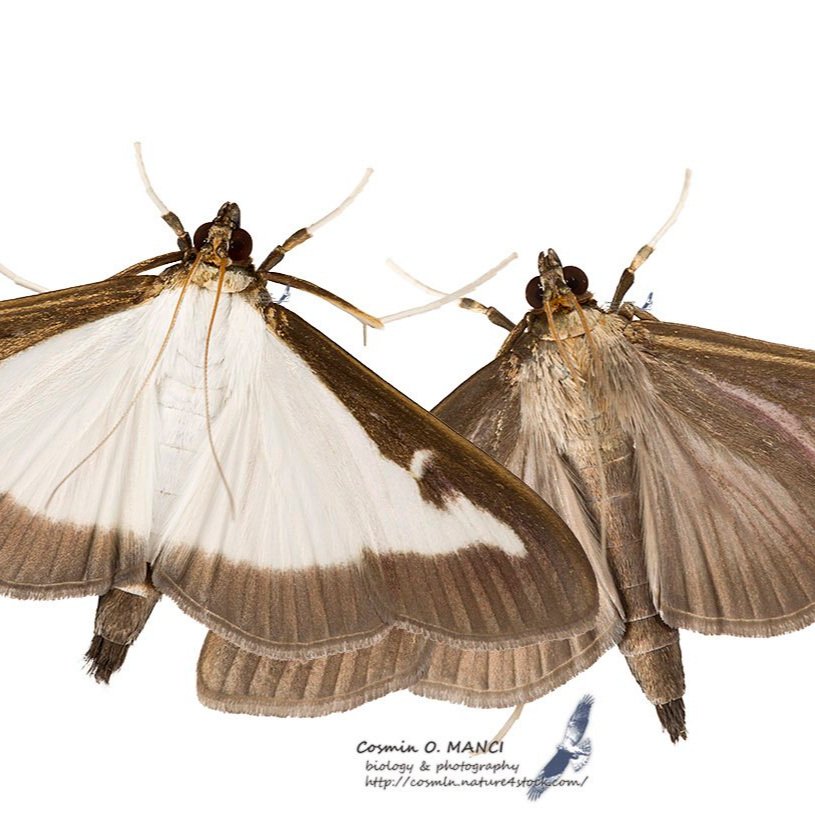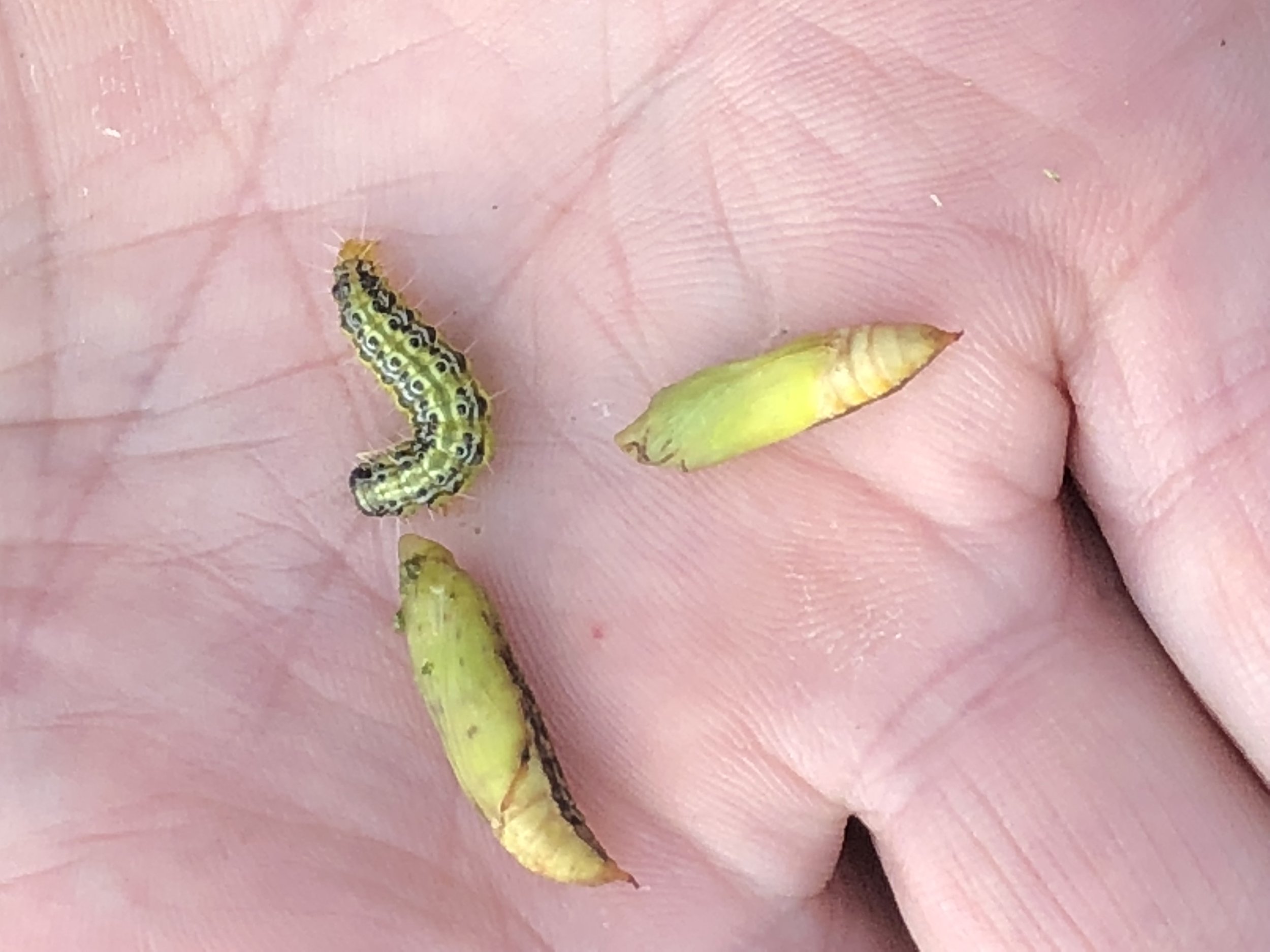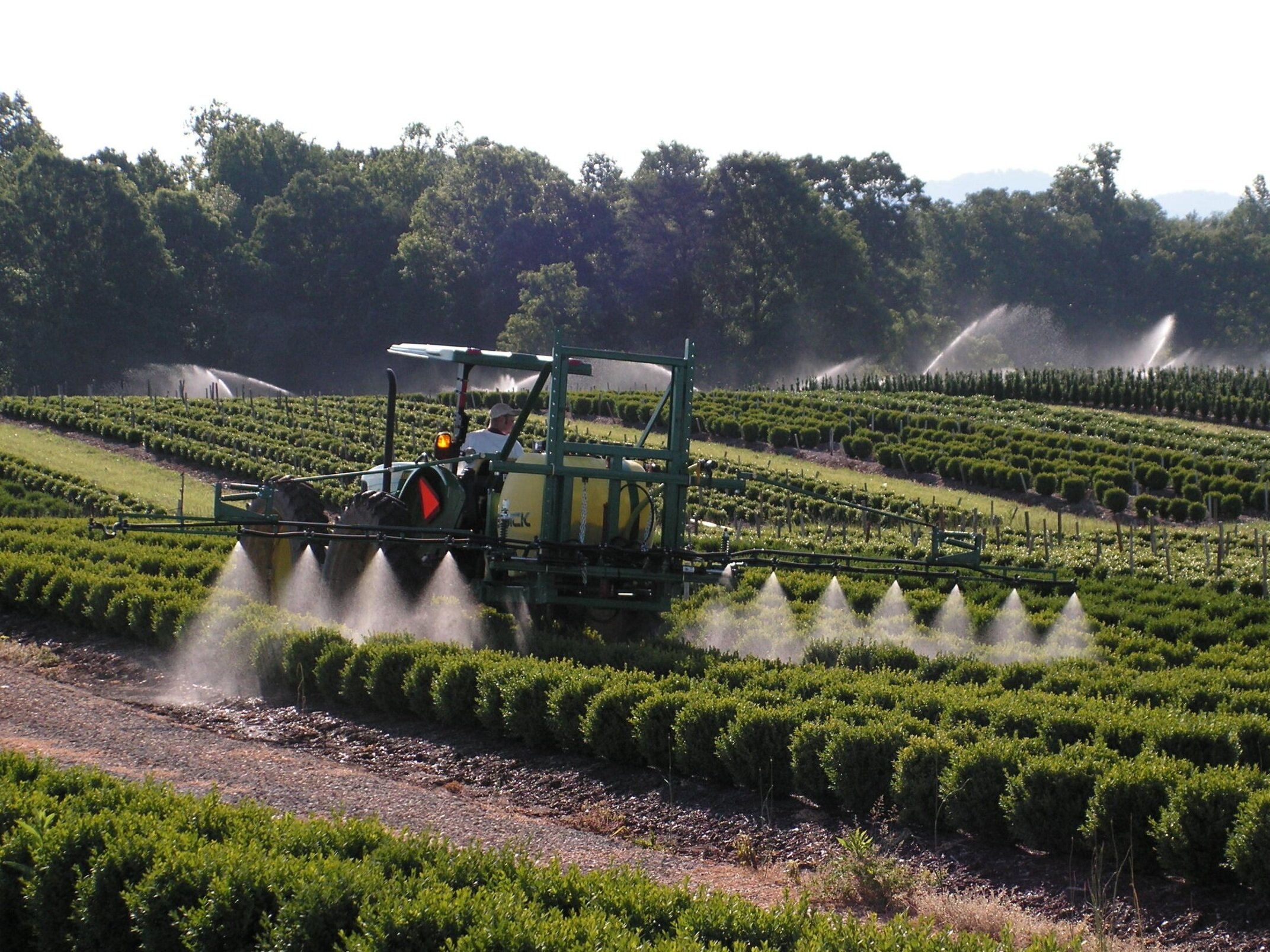Box Tree Moth
Scroll down or click the images below for details.
Box Tree Moth Summary
Native to East Asia, the Box Tree Moth (Cydalima perspectalis), a defoliating and destructive pest of boxwood (Buxus spp.), has been a serious issue in Europe for the past decade. The moth appeared in the Toronto, Canada area in 2018. Despite the efforts of regulatory agencies [Canadian Food Inspection Agency (CFIA) and U.S. Department of Agriculture’s Animal and Plant Health Inspection Service (APHIS)], some 2021 shipments of boxwood to a number of U.S. retailers from a nursery on the Niagara Peninsula contained infested material.
Response by APHIS was swift, and within days of detection issued a federal order to temporarily halt the importation of boxwood into the U.S. from Canada (all provinces) and are working with affected states to trace and destroy plants that may be infested. Among other initiatives, a program of traps and lures were deployed to impacted facilities and will be monitored for moth activity in 2022.
Recent reports indicate that a breeding population of BTM has moved into New York, specifically counties abutting Lake Ontario. APHIS has established a quarantine for Erie, Niagra, and Orleans counties in New York which prohibits intrastate and interstate movement of boxwood. Concerns are mounting in the Northeast.
For extensive information on Box Tree Moth and the APHIS response, follow this link - APHIS Box Tree Moth Response
Research & Outreach
Most of the existing research on box tree moth has been conducted in Europe, as the pest was not present in the U.S. until very recently. Identification and management resources for regulators, the green industry, and the public have recently been generated by APHIS, the Horticultural Research Institute (HRI), the IR-4 Project, and numerous state Cooperative Extension specialists and consortia as the threat has grown.
Several outreach/educational resources from the above groups focus on identification - the most critical step in preventing the spread of this pest. We encourage you to view these helpful fact sheets:
APHIS Box Tree Moth Pest Alert (include lifecycle information (2 page PDF)
Box Tree Moth and SE U.S. Lookalikes (consortium of institutions) (1 page PDF)
Box Tree Moth Pest Alert - Virginia Cooperative Extension (2 page PDF)
Box Tree Moth Information - Michigan State University (website)
CABI Box Tree Moth - extensive report on box tree moth in Europe.
Per APHIS guidance, if you find an insect that you suspect is the box tree moth, please contact your local Extension
office or State Plant Regulatory Official to have the specimen identified properly. To locate an Extension specialist
near you, go to the USDA website at www.nifa.usda.gov/Extension. A directory of State Plant Regulatory
Officials is available on the National Plant Board website at www.nationalplantboard.org/membership.
NewGen Boxwood/Saunders Genetics LLC and several other concerned nurseries have contributed funding to the Horticultural Research Institute’s special initiative on box tree moth. A portion of these funds are earmarked for a “Preliminary study on the parasitoid complex of the box tree moth in Asia for a classical biological control program in North America” by Dr. Marc Kenis of CABI. For more on this study, visit HRI’s funded research page.
Prevention & Control
The box tree moth can be managed via several products labeled for caterpillar management, including some biopesticides. The IR-4 Group (university researchers) published a list of potential BTM insecticides - all useful for caterpillar control. Research is ongoing regarding specific labeling.
View PDF here: Insecticide Options for Box Tree Moth Management
Pheromone traps are strongly recommended for use during the “flying season” in the vicinity of commercial boxwood production areas, garden retail establishments, and large landscape plantings (public gardens, parks, etc.). Understanding the moth’s life cycle is important for these traps to be successful. Setting the pheromone out at the appropriate time is critical, as it degrades within 4-6 weeks. Unfortunately their are few North American vendors of pheromone traps. Great Lakes IPM does offer them in quantity packs (Box Tree Moth pheromone sold separately) - https://www.greatlakesipm.com/monitoring/traps/trece-pherocon/



